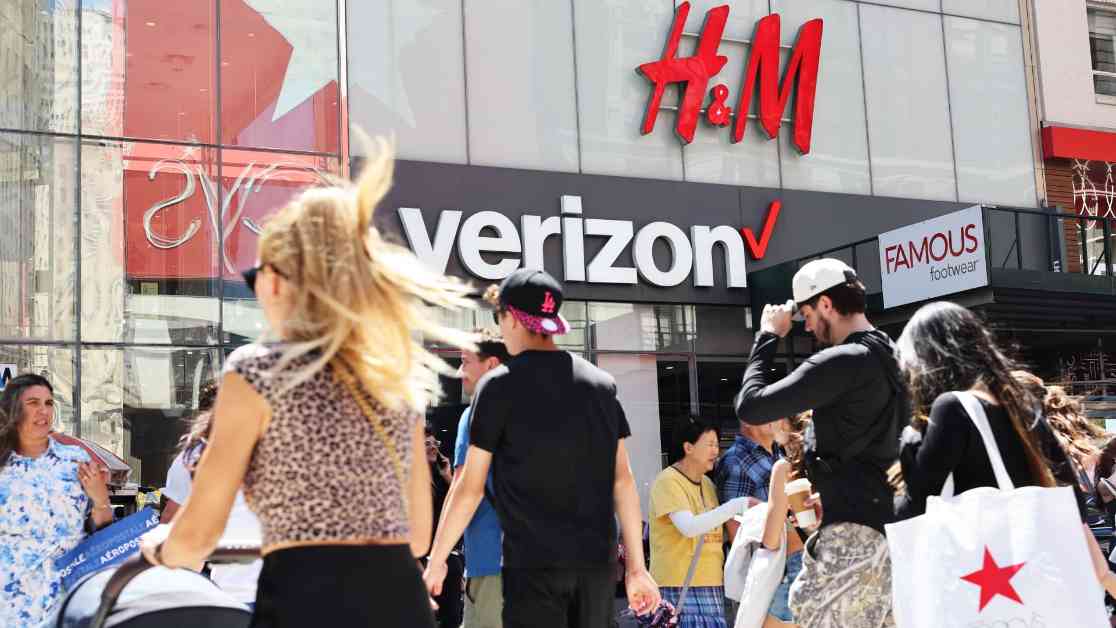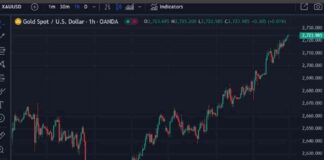Consumer spending in the United States saw a significant boost in July, surpassing economists’ expectations and driving a 1% increase in retail sales. The Commerce Department reported that consumer spending remained resilient even as inflation pressures showed signs of easing. This positive news comes amid a backdrop of economic uncertainty and volatility in global markets.
Strong Retail Sales Growth
According to the Commerce Department’s report, advanced retail sales surged by 1% in July, outpacing the 0.3% increase that economists had anticipated. This growth in consumer spending is a positive sign for the economy, as it indicates that consumers are still willing to open their wallets despite concerns about rising prices and economic instability.
The increase in retail sales was broad-based, with gains seen across various sectors. Motor vehicle and parts dealers experienced a notable 3.6% increase in sales, while electronics and appliance stores saw a 1.6% rise. Food and beverage outlets also reported a 0.9% increase in sales, reflecting strong consumer demand in these categories.
However, not all sectors saw positive growth. Miscellaneous retailers saw a decline of 2.5%, gas stations reported only a 0.1% increase in receipts, and clothing stores were down 0.1%. These mixed results indicate that consumer preferences and purchasing patterns are evolving in response to changing economic conditions.
Labor Market Strength
In addition to the robust retail sales figures, the labor market also showed signs of strength in the latest data release. Initial unemployment benefit claims for the week ended August 10 totaled 227,000, a decrease of 7,000 from the previous week and lower than the estimate for 235,000. This decline in jobless claims suggests that employers are still hiring and that the labor market remains healthy.
Continuing claims, which run a week behind, also declined slightly to 1.864 million. This data point, coupled with the lower initial jobless claims, paints a positive picture of the employment landscape in the United States. Despite concerns about a potential economic slowdown, the labor market appears to be holding steady for now.
Inflation Trends
The latest data on inflation showed some encouraging signs in July. Prices that consumers pay for goods and services increased by 0.2% on the month, with the annual inflation rate declining to 2.9%, its lowest level since March 2021. This easing of inflation pressures is a welcome development for consumers, who have been grappling with higher prices for goods and services in recent months.
Wholesale prices also saw modest growth, with a 0.1% increase on the month and a 2.2% rise on the year. While these inflation numbers remain above the Federal Reserve’s 2% target, the data indicates a gradual easing of price pressures that had peaked two years ago. This trend is likely to provide some relief to consumers who have been feeling the pinch of higher prices.
However, not all inflation indicators moved in the same direction. Import prices increased by 0.1% in July, slightly ahead of the forecast for no change. On a year-over-year basis, import prices rose by 1.6%, the biggest gain since December 2022. This uptick in import prices could put pressure on consumer prices in the coming months, potentially offsetting some of the recent easing in inflation.
Market Reaction and Policy Implications
The positive economic data released on Thursday led to a sharp rise in stock market futures and Treasury yields. Investors welcomed the news of strong retail sales and a healthy labor market, signaling confidence in the resilience of the U.S. economy. The Federal Reserve is expected to respond to these developments with its first rate cut in more than four years when it next meets in September, as policymakers seek to support economic growth amid global uncertainty.
Financial markets are also anticipating a shift in the Fed’s focus from inflation to broader economic indicators, such as the labor market and manufacturing activity. The recent data on industrial production showed a decline of 0.6% in July, worse than the forecast for -0.1%, as Hurricane Beryl impacted output. Capacity utilization also fell to 77.8%, below the estimate for 78.5%. These figures suggest that the manufacturing sector is facing headwinds, which could have implications for economic growth in the coming months.
Overall, the latest economic data paints a complex picture of the U.S. economy, with strong consumer spending offset by challenges in the manufacturing sector and inflation pressures. The Federal Reserve will need to carefully balance these competing factors as it considers its policy options in the months ahead. As consumers continue to drive retail sales growth and the labor market remains resilient, policymakers will be closely monitoring economic indicators for signs of stability and potential risks.

















